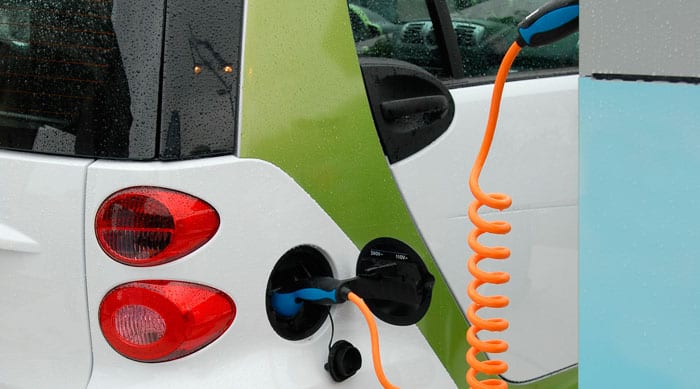Rise of EVs could add 18GW to peak demand by 2050
The growth of electric vehicles (EVs) could add up to 18GW - or 30 per cent - to peak power demand by 2050, National Grid has predicted in its latest Future Energy Scenarios report.
13th July 2017 by Networks

Without smart charging, the company says peak demand could grow by as much as 8GW by the end of the next decade due to a “dramatic rise” in sales.
The 18GW increase occurs under the “consumer power” scenario that envisions a world in which there is high prosperity but consumers have little inclination to become environmentally friendly.
“This new era of network operation is exciting and manageable, but it’s important there is investment in smart technologies and electricity infrastructure, and a coordinated approach across the whole electricity system”.
This scenario nevertheless foresees the widespread adoption of electric vehicles due to their desirability and low cost compared to their combustion engine forebears. Peak demand expands by 3.5GW by 2030, or 8GW in the absence of smart charging capabilities.
Electric vehicle sales are expected to be even higher in the “two degrees” scenario, which maps the route to meeting all the UK’s emissions reduction targets and replaces the “gone green” scenario from previous reports. In this world, consumers consciously choose to be greener and have the wealth to support their decisions.
Despite seeing higher sales of electric vehicles, peak demand increases by just 6GW due to the high level of engagement among consumers – most of whom charge their vehicles at off-times – as well as the rise of shared autonomous vehicles. Without this consumer engagement, the addition to peak demand would be 12GW.
Electric vehicle sales are significantly lower in the other two scenarios, especially “steady state” which has taken the place of “no progression”.
Peak demand from electric vehicles

Source: Future Energy Scenarios, National Grid
The report also draws attention to the rapid expansion in renewable and distributed generation.
It says renewable capacity could swell to 110GW – or 60 per cent of installed capacity – by 2050 in the “two degrees” scenario, whilst distributed generation could balloon to 93GW – or 50 per cent of installed capacity – in the “consumer power” world. Storage capacity is expected to rise to between 5.2GW and 10.7GW.
“The energy landscape is changing rapidly and becoming more diverse and complex,” said National Grid head of energy insights, Marcus Stewart. “An energy system with high levels of distributed and renewable generation is already a reality.”
“Electric vehicles are one of many new technologies that are rapidly transforming the energy sector; technical progress and cost reductions in storage and solar panels have driven major change in a short space of time.
“This new era of network operation is exciting and manageable, but it’s important there is investment in smart technologies and electricity infrastructure, and a coordinated approach across the whole electricity system”.
Stewart said gas will continue to play an “important role” in the transition towards low-carbon heat and power.
Energy minister Richard Harrington commented: “It’s right that National Grid provides a frank assessment of the opportunities and challenges that lay ahead with record numbers of electric vehicles on our roads, continuing investment in renewables and innovative new technologies coming onto the market.
“Our industrial strategy, £400 million energy innovation programme and smart systems plan, which will give consumers greater control over how they use their energy, will lay the ground for a smarter, modern energy system for Britain.”
The future energy scenarios

Source: Future Energy Scenarios, National Grid
Comments
Login on register to comment
Related content

Gas
Cadent backs launch of major bio-CNG HGV refuelling station
Gas network’s £250,000 infrastructure investment ensures supplies to existing connected customers have not been impacted

Gas
Editor’s blog: The biggest tests of resilience are yet to come
Network content director Jane Gray reflects on the industry's coronavirus response to date and the challenges still to come.

Gas
From the front line: Chris Garside and Andy Simcoe, Northern Gas Networks
Key workers across the power and gas networks are playing a critical role in the national response to Coronavirus. Network has committed to profiling their stories.
Related supplier content

Power
Load patterns and lockdown: how Covid-19 is impacting electricity networks
Insights into dynamics on the low voltage network as the outbreak unfolds

Heat
How E.ON. is helping the City of London become a zero emissions city
Discover Citigen. Deep in the heart of our bustling capital

Power
The Innovation Factor: Managing the transition to smart communication technologies in the electricity distribution sector white paper
The transition from legacy communications systems to new technologies can seem daunting for organisations in the electricity sector. But with market dynamics changing rapidly